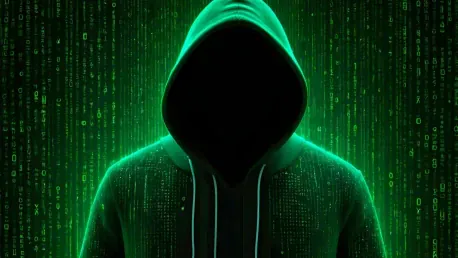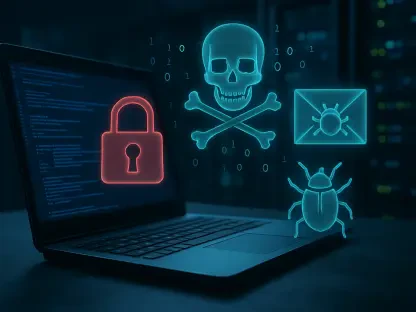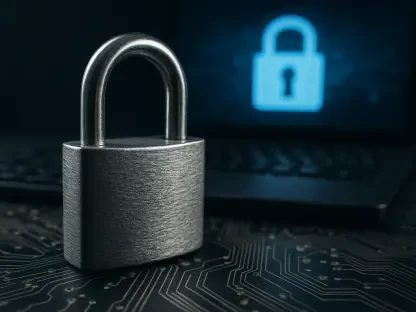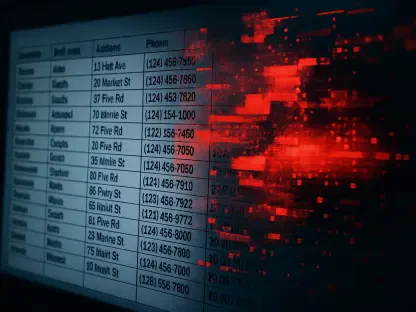A significant security breach has revealed vulnerabilities even within firms dedicated to cybersecurity. In July 2024, KnowBe4, a well-known Florida-based IT security company, found itself compromised by a North Korean hacker posing as a legitimate tech employee. This breach, facilitated by sophisticated deep fake technology, underscores the evolving threat landscape.
The Incident Unfolds
Sophisticated Deception Techniques
In an alarming turn of events, KnowBe4 unknowingly hired a North Korean hacker who used a stolen identity during the interview process. Despite stringent security measures, including background checks, reference verifications, and four video conferences, the individual successfully infiltrated the company’s defenses. The attacker leveraged a real, valid U.S. identity to pass these verification steps, making the deception even more pernicious. This use of a genuine identity added layers of complexity, baffling even seasoned cybersecurity professionals.
The incident became even more concerning when it was realized that the hacker had used deep fake technology to manipulate video interviews convincingly. Due to the high fidelity of these manipulated visuals, the deep fake was not flagged at any stage of the hiring process. It wasn’t until the individual had been on the job for a considerable period that discrepancies began to surface, eventually revealing the deception. This breach has raised important questions about the reliability of current hiring protocols and the necessity for more advanced verification tools.
Discovery and Initial Reactions
Roger Grimes, a data-driven defense evangelist at KnowBe4, expressed disbelief upon discovering the breach. The initial shock quickly gave way to an urgent internal review aimed at evaluating the integrity of the company’s hiring system and identifying any other potentially compromised employees. The revelation sparked a sense of urgency within the firm, prompting an immediate overhaul of existing protocols to address how such a breach could have occurred.
Stu Sjouwerman, CEO of KnowBe4, emphasized the complexity of the situation, pointing out that the hacker’s use of a legitimate U.S. identity made the breach exceptionally difficult to detect. The hacker’s strategy to manipulate existing systems engineered to catch fraudsters offered a harrowing wake-up call. This realization has initiated a deeper exploration into the robustness and limitations of traditional hiring and security measures. The incident underscores the necessity for continuous improvement to shield against increasingly sophisticated cyber threats.
Expert Insights on Deep Fake Cyber Threats
The Dangers of Deep Fakes
Paul Vann and Justin Marciano, founders of the deep-fake cybersecurity platform IdentifAI, highlighted the severe risks posed by deep fake technology. They explained that the attack on KnowBe4 utilized real-time live mechanisms, making detection incredibly difficult. Vann and Marciano detailed how deep fakes can create compelling impersonations that bypass conventional verification methods, posing significant threats to organizations globally. This new breed of cyber threat has evolved to mimic human behavior and appearance so closely that traditional defense mechanisms are frequently inadequate.
As deep fake technology advances, the ability for malicious actors to create realistic, deceptive personas grows more potent. Vann and Marciano stressed that the cybersecurity landscape must adapt rapidly to these emerging threats. They argued that organizations need to integrate innovative technologies capable of identifying the nuanced, elusive markers of deep fakes. Their insights suggest that industries relying on rigorous identity verification processes must now recognize the stark limitations of their current systems in the face of this advanced manipulation technology.
Technological Solutions to Combat Deep Fakes
IdentifAI offers a potential solution by creating a facial profile during the interview process, allowing for quick and accurate authentication of applicants. Utilizing machine learning and artificial intelligence, IdentifAI’s technology detects minute inconsistencies in facial movements and expressions that typically betray deep fakes. Paul Vann and Justin Marciano argue that such innovations are crucial in the fight against sophisticated fraud attempts. They believe the implementation of these solutions could drastically reduce the chances of deep-fake-driven breaches.
Deep fakes are becoming more prevalent and convincing, pushing organizations to adopt advanced technological measures to stay ahead of malicious actors. Integrating sophisticated detection technology like IdentifAI could provide a robust layer of defense against these deceptive practices. The cybersecurity sector must prioritize the adoption of these technologies to proactively prevent breaches. Vann and Marciano’s perspectives underscore the urgent need for continuous evolution and integration of state-of-the-art security tools to safeguard against deeply sophisticated cyber threats.
Broader Implications for the Cybersecurity Industry
Learning from the KnowBe4 Breach
The KnowBe4 incident serves as a critical teaching moment for the cybersecurity industry. Despite their advanced security measures, the company’s vulnerability highlights the need for continuous vigilance and adaptation. This breach illustrates that even the most security-conscious organizations are not immune to sophisticated cyber threats. The industry must learn from this event, emphasizing the importance of reviewing and revising existing protocols. The breach brought to light that conventional methods might not suffice in curbing advanced cyber offenses, necessitating innovative strategies.
In response to such incidents, cybersecurity firms are encouraged to adopt a more resilient approach, integrating new technologies and constantly reassessing their procedures. The KnowBe4 breach stands as a stark reminder that staying one step ahead in the cybersecurity race involves not just reactive measures but proactive strategies. This includes developing more robust systems, training employees on emerging threats, and employing cutting-edge tools designed to counteract deep fakes and other sophisticated scams. Continuous improvement and a dynamic security posture are crucial in protecting sensitive information.
Government Awareness and Advisory
The U.S. government has already recognized these emerging cyber threats, issuing an advisory in May 2022 warning against them. The advisory indicated the increasing use of technologies like deep fakes by malicious actors to infiltrate organizations and commit fraud. The KnowBe4 breach underscores the importance of such advisories and the need for both private sector firms and government bodies to collaborate in addressing these advanced threats. The incident highlights the critical role of timely and detailed advisories in preparing organizations to confront and mitigate such risks.
Government bodies need to remain proactive, continuously updating their advisories based on the latest intelligence and technological advancements. Collaboration between the private sector and government entities can foster a more comprehensive approach to cybersecurity, leveraging combined expertise and resources. The KnowBe4 breach exemplifies the potential dangers of underestimating these threats and serves as a call to action. This partnership can lead to the development of new standards and guidelines, helping companies across various sectors to fortify their defenses more effectively.
Evolving Cybersecurity Practices
Enhancing Hiring Protocols
In response to this breach, cybersecurity firms must reevaluate their hiring protocols. Background checks and reference verifications alone are no longer sufficient to ensure the authenticity of potential employees. Companies should incorporate advanced verification technologies, such as those offered by IdentifAI, to authenticate applicants and prevent similar incidents. The integration of facial recognition technology and advanced AI-driven verification processes can significantly mitigate risks posed by deep-fake attempts during the hiring process.
Revamping hiring protocols involves more than just technological upgrades. Firms need to foster a culture of cybersecurity awareness among their HR teams, ensuring that they are equipped to recognize and address potential threats. Consistent training and updates on the latest verification tools and techniques are essential. By embedding a multi-layered approach that combines technological solutions with human vigilance, firms can create a more resilient hiring process. This comprehensive strategy is crucial in defending against the increasingly sophisticated tactics employed by cybercriminals.
Continuous Improvement and Innovation
The cybersecurity industry must commit to ongoing assessment and enhancement of its security measures. This includes staying informed about emerging threats, investing in innovative solutions, and maintaining a proactive approach to defense. The KnowBe4 breach is a stark reminder of the importance of these efforts. Firms must prioritize research and development efforts aimed at creating advanced systems and technologies capable of preemptively thwarting sophisticated cyber threats. Regularly updating and testing security protocols ensure that they remain effective against evolving attack vectors.
Incorporating feedback from cybersecurity incidents and adapting strategies accordingly is also vital. Collaborative efforts, such as sharing insights and best practices within the industry, can significantly bolster collective defenses. Innovation should be a cornerstone of the cybersecurity ethos, encouraging firms to not only foresee potential threats but also to pioneer groundbreaking solutions. This dynamic and proactive stance will prove essential in an age where technology evolves at an unprecedented pace, and so do the threats.
Conclusion
A major security breach has exposed significant vulnerabilities even within organizations specializing in cybersecurity. In July 2024, KnowBe4, a prominent IT security company based in Florida, fell victim to an elaborate cyberattack. The breach was orchestrated by a North Korean hacker who successfully infiltrated the company by impersonating a legitimate tech employee. The hacker employed advanced deep fake technology to deceive the company’s security measures, highlighting the increasingly sophisticated tactics used by cybercriminals today.
The incident serves as a stark reminder that no organization is immune to cyber threats, regardless of their expertise. Deep fake technology, which manipulates digital media to create highly convincing false representations, poses a growing risk to businesses worldwide. This particular breach at KnowBe4 underscores the urgent need for companies to enhance their security protocols and to remain vigilant against increasingly cunning cyber threats. As threat landscapes evolve, so too must the strategies designed to protect sensitive information.









